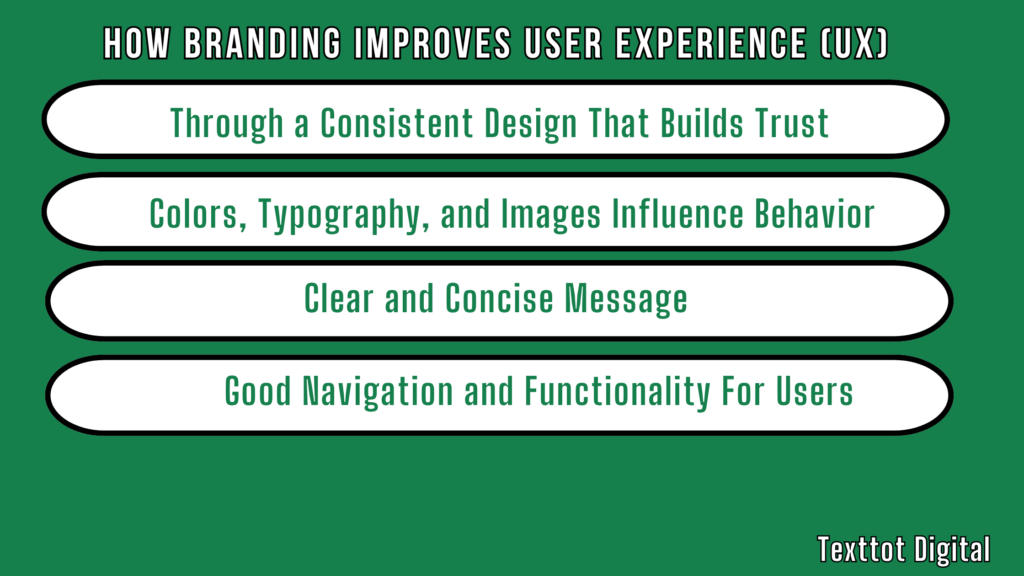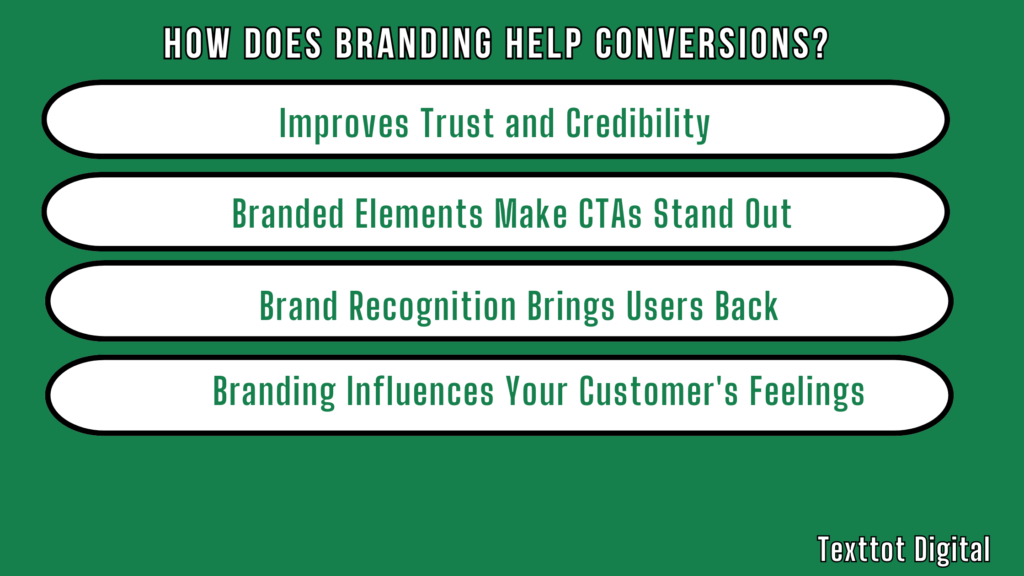The Important Role of Branding in Web Design

A website without strong branding is just another page on the internet. Have you ever landed on a website and instantly felt like you “get” the brand? Maybe the colors, fonts, and messaging immediately made sense, creating a seamless, trustworthy experience. That’s the power of branding in web design, it shapes how users perceive and interact with your business online.
A strong, consistent brand not only improves user experience but also builds trust and boosts conversions. Because without it, your website can get lost in the crowd, making it difficult for users to remember your business and what makes it unique.
While it’s now a cliche that the digital world is very competitive, branding in web design is what helps you stand out, creating a lasting impression that turns visitors into loyal customers and that’s what your business wants, right?
So, how does branding shape web design, and why does it matter for engagement and conversions? Let’s get into it.
Table of Contents
What Is Branding in Web Design?
Branding in web design is more than just slapping a logo on your homepage or choosing a trendy color palette. It’s the entire personality of your website starting from the way it looks and sounds, down to how it makes people feel when they visit. A strong brand identity ensures your site is instantly recognizable, trustworthy, and engaging.
Let’s use your favorite brands as examples. When you visit Apple’s website, you instantly feel its sleek, minimalist design, high-quality visuals, and premium aesthetics. Nike, on the other hand, is bold, energetic, and motivational. These companies don’t just have logos; they have brand identities that are woven into every aspect of their website design.
It’s not just big companies that benefit from strong branding in web design. Small businesses, personal brands, and startups can stand out in crowded markets by creating a unique and memorable online presence.
Although, you have to really be consistent. Studies show that consistent branding across all platforms can increase revenue by up to 23%. Having a distinct style and voice makes you more recognizable and helps build long-term customer relationships. But if your website has one style, your social media has another, and your emails feel completely different, users will struggle to connect with your brand.
How Branding Improves User Experience (UX)

Your website shapes how users feel when they visit. Imagine walking into a boutique with good lighting, carefully arranged displays, and a friendly smile from the sales officer. The environment makes you feel comfortable and relaxed, you want to look around and maybe even make one or two purchases. But, picture walking into a store where the lighting flickers, the shelves are messy, and no one acknowledges you. You’d probably walk right out, right?
That is exactly how your website feels for your visitors. A well-branded site will create a seamless, enjoyable experience. In fact, 94% of first impressions about a website are design-related, meaning branding plays a huge role in how users perceive your business.
Now, how does branding impact user experience on your website?
A Consistent Design That Builds Trust
People crave familiarity. When a website maintains consistent branding across every page, it reassures visitors that they’re in the right place. That way, they recognize your brand across different platforms and associate it with professionalism, but if every page on your site looks different, users may get confused and leave, taking potential sales with them.
Research shows that a well-designed user interface can boost conversions by 200%, while better UX design overall can increase conversion rates by 400% (Forrester). That’s a huge difference, all from having a site that feels seamless and familiar.
When your brand identity is strong, visitors instantly recognize your business, trust your content, and feel comfortable exploring your site.
Colors, Typography, and Images Influence Behavior
Ever wondered why fast-food chains use red and yellow? That’s because those colours trigger feelings of excitement and hunger. Branding isn’t only about looking good, it’s also about making people feel something.
Your choice of colors, fonts, and visuals shapes how visitors feel about your brand. Research shows that color improves brand recognition by up to 80%, proving that the right design choices can make a lasting impact.
If your site’s design aligns with your brand’s personality and values, visitors will feel more connected to it. For example, if your brand is all about luxury, soft neutrals and sleek fonts will reinforce that. If it’s fun and playful, bright colors and bold typography will set the tone.
Clear and Concise Message
A strong brand identity ensures your messaging is clear and to the point. If visitors land on your site and can’t figure out what you do in seconds, they’re gone. 55% of users spend less than 15 seconds on a website, so your branding needs to communicate value instantly.
A well-branded site combines visuals and copy to tell a compelling story, making it easy for users to understand your business. Your headlines and taglines should immediately answer your visitor’s main question “What’s in it for me?”
For example, if you run a fitness centre or gym, a strong brand presence means visitors instantly see bold, energetic visuals, a tagline like “Transform Your Body,” or “One Workout at a Time,” or any other easy-to-find call-to-action. No guessing, no confusion, just instant clarity.
When branding and messaging work together, users feel confident in your brand, trust your expertise, and are more likely to take action.
Good Navigation and Functionality for Users
It can be frustrating when you’re on a website where you can’t find the menu or have to click a hundred times just to get basic information.
Branding includes structuring your site in a way that feels natural to users. Using clear menus, simple layouts, easy-to-read fonts, and branded CTAs buttons guide visitors exactly where they need to go.
Plus, an accessible design ensures that people with disabilities can engage with your brand, therefore, widening your audience and showing that your business values inclusivity.
If your website branding lacks functionality and you need help improving it, you should take the first step and reach out to us at Texttot Digital for a free consultation.
How Does Branding Help Conversions?

As much as branding improves your user experience, it is also about results. A well-branded website directly affects how many visitors take action, whether that means signing up for your newsletter, making a purchase, or booking a consultation.
Let’s break down how branding directly impacts your conversions.
Improves Trust and Credibility
Let’s be realistic, people don’t buy from websites that look unprofessional. In fact, 81% of consumers say they need to trust a brand before making a purchase, and branding in web design plays a big role in building that trust.
A strong brand presence reassures visitors that your business is legitimate, trustworthy, and worth their money. Professional visuals, consistent branding, and clear messaging make users feel confident in taking the next step.
Branded Elements Make CTAs Stand Out
Your Call-to-Action is where conversions happen. It’s the button that pushes users to take action, but if it blends into the background, they might not even notice it.
Branding ensures your CTAs are visually distinct and aligned with your brand identity. A CTA that matches your brand colours, uses your unique tone of voice, and feels like a natural part of the user journey will get more clicks.
Studies show that changing a CTA button colour to match brand aesthetics can increase conversions by 21%. That’s the power of branding, making action irresistible.
Brand Recognition Brings Users Back
Ever noticed how you automatically recognize brands like Coca-Cola or McDonald’s, even without their logos? That’s the power of brand recognition. When users feel familiar with a brand, they’re more likely to return to its website and engage with its content.
Consistent branding increases average revenue by 10-20% because people are drawn to brands they recognize and trust. So, whether it’s your logo, fonts, colour scheme, or messaging, keeping things consistent helps you stay top-of-mind when users are ready to convert.
Branding Influences Your Customer’s Feelings
Branding plays a huge role in shaping how users feel about your business. The colours, typography, and imagery you use can bring feelings of excitement, luxury, comfort, or urgency.
Research shows that 95% of purchase decisions happen subconsciously, meaning the way your brand makes people feel directly impacts conversions.
A well-branded website builds trust, guides users toward action, and creates an emotional connection that keeps them coming back. And when users trust and connect with your brand, conversions naturally follow.
But what do you do to keep conversions flowing? By elevating your online presence with Texttot Digital now’s the time to invest in professional website branding that turns visitors into loyal customers.
Branding Elements That Make Your Website Stand Out

Your website gives your customers a first impression of your business, and if it feels disorganized, inconsistent, or visually off-putting, they’ll bounce faster than you can say “lost lead.”
Every design choice, from the colours to the fonts to the way content is structured, plays a role in shaping perception and engagement. You should be able to craft an experience that resonates with users and encourages them to take action.
Having said that, let’s break down the key elements that can either elevate your website or send visitors running.
Logo Placement and Consistency
Your logo is the face of your brand. It’s often the first thing visitors notice, and that immediately influences how people feel about your brand.
If it’s not placed strategically and consistently across your site, users might struggle to recognize your business. Research shows that top-left logo placement increases brand recall by 89% compared to right-aligned logos. Why? Because users naturally scan from left to right.
However, beyond placement, consistency matters a lot. Don’t make the mistake of having different logo variations across different pages of your website, maybe one in full colour, another in black and white, and another with a random background. This inconsistency confuses visitors and weakens brand recognition. So, stick to a uniform logo style, ensure it’s high-quality, and make sure it links back to your homepage.
Brand Colors and Fonts
Colours and typography do more than make your site look nice. They shape emotions and influence user behaviour. You should always make sure your website branding is intentional and use colours and fonts that reflect your brand’s identity and messaging.
Studies show that colours increase brand recognition by up to 80%. When you see the colour blue, you think of Facebook or PayPal, and these two brands convey trust. Green, on the other hand, is relative to health and growth. That is why it’s very important to choose a colour palette that aligns with your brand’s personality and stick with it.
Typography is another silent communicator. It might seem like a small detail, but it plays a huge role in how users perceive your brand. A law firm using playful, cartoonish fonts would feel unprofessional, while a children’s brand using stiff, corporate fonts would feel uninviting.
You can never go wrong with a well-chosen colour and typography scheme. It will ensure digital branding consistency and make your website feel organized and polished, rather than chaotic and confusing.
Tone and Messaging
The way you communicate matters. Your tone of voice should reflect your brand’s personality and speak directly to your audience. Whether you’re fun and playful or professional and authoritative, consistency in messaging builds trust. Having a friendly tone on your homepage, but a stiff, robotic voice on your product pages creates confusion.
Research shows that users read only about 20% of the text on a webpage, so your messaging needs to be concise and impactful. Use strong headlines, clear value propositions, and compelling CTAs to make it easy for visitors to understand your brand and what you offer.
Imagery and User-Centric Design
In website branding, imagery sets the mood, tells a story, and connects emotionally with visitors, while a user-centric design ensures smooth navigation and functionality.
High-quality visuals are crucial, as people process images 60,000 times faster than text. Ensure you use original photography or well-curated graphics to strengthen your brand identity. Images should tell a story and maintain visual consistency with a unified colour palette and style.
As you work towards having a beautiful design, remember it means nothing if it’s frustrating to use. That’s why you must make sure your website also has a user-centric design that ensures clear navigation, fast loading, a mobile-first approach and accessibility with legible fonts and alt text.
Conclusion
Having a well-branded website goes beyond aesthetics; from stunning visuals to seamless functionality; every detail matters. It shapes user experience, builds trust, and drives conversions.
It doesn’t matter whether you’re starting fresh or rebranding, investing in professional web design and branding services ensures your site not only looks great but also converts visitors into loyal customers.
Reach out to us at Texttot Digital, we offer custom branding and design tailored to represent your brand and help you grow. Let’s transform your online presence!
Frequently Asked Questions
Is Branding the Same as Logo Design?
No, branding and logo design are not the same, though they are closely related. Logo design is just one element of branding. It’s a visual symbol that represents a company. Branding, on the other hand, is the overall strategy that shapes how a business is perceived. It includes brand identity like logos, colors, typography, messaging, voice, customer experience, and emotions associated with the brand. While a logo helps with recognition, branding builds trust, loyalty, and a strong market presence.
Which Type of Logo Is Best for a Website?
The best logo for a website depends on your brand identity and industry, but it should always be simple, scalable, and memorable. Wordmark logos like Google work well for brands with distinct names, while lettermarks like IBM are ideal for long business names. Icon-based logos like Apple create strong visual recognition, and combination logos like Adidas offer versatility across different platforms.
What Is the Difference Between Logo Design and Web Design?
Logo design focuses on creating a unique visual identity for a brand, including typography, symbols, and colors that represent its personality. Web design, on the other hand, is about designing the entire digital experience of a website. It includes layout, navigation, UI/UX elements, and branding integration to create a functional, visually appealing, and user-friendly site.
What Are the Qualities of a Good Brand Name?
A good brand name should be memorable, unique, and reflective of your brand identity. It should be easy to pronounce and spell, making it accessible to a wide audience. Most importantly, it should align with your brand’s values and message, creating an instant connection with your target audience.
Affiliate Disclosure
Some of the links on Texttot.com may be affiliate links. This means we may earn a small commission if you make a purchase through these links, at no extra cost to you. We only recommend products and services we trust and believe add value to our audience.